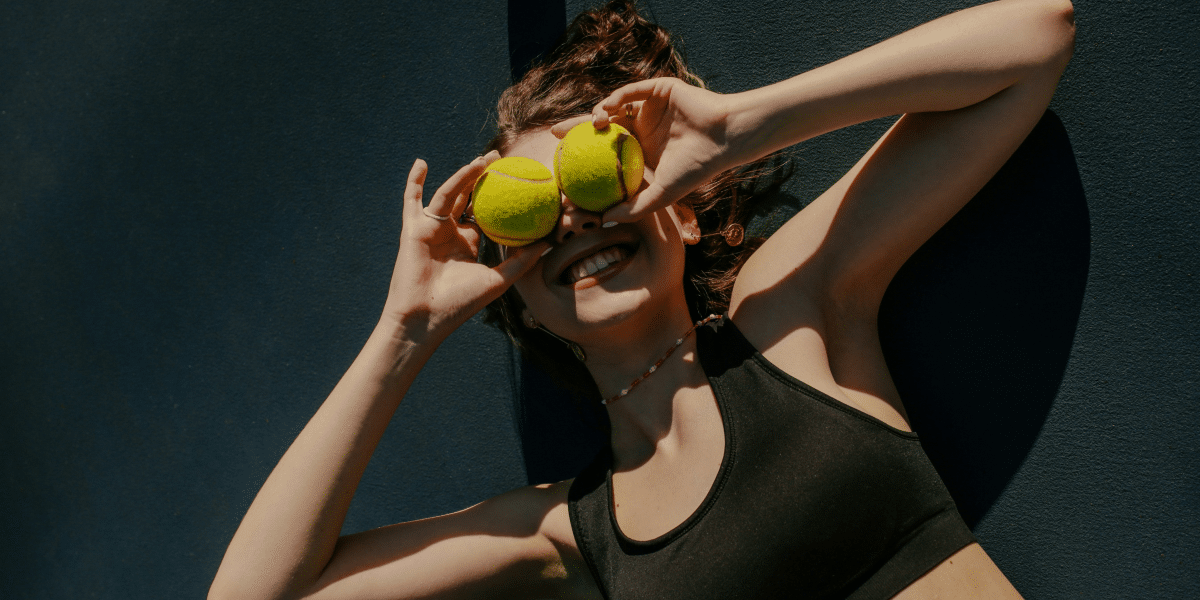Trust us, having the proper equipment isn’t just about looking good on the court (although that doesn’t hurt!). It’ll make all the difference in your comfort, safety, and ultimately, your enjoyment of the game. The right racquet feels like an extension of your arm, not a clunky weight. Supportive shoes will keep your ankles happy as you chase down every ball. And breathable clothing will ensure you don’t overheat during those intense rallies. So, ditch the beat-up sneakers and that old gym t-shirt – it’s time to transform yourself into a tennis ace (with the outfit to match!).
The Star of the Show: Your Racquet
Think of your racquet as your trusty sidekick on the court. It’s the extension of your arm, the source of your power shots, and the key to those tricky drop volleys. Picking the right one is like finding that perfect pair of jeans – it just feels right. So, how do you find your tennis soulmate? Here’s a breakdown:
-
Size: Grip Size Matters
Grip size is all about finding that Goldilocks “just right” feeling. Grip sizes are measured in inches, and there’s usually a handy guide at sporting goods stores. A grip that’s too small will force you to clench your hand tightly, which can lead to fatigue and even injuries. Too big, and you could lose control of the racquet mid-swing (not ideal when a powerful forehand is zooming towards you).
-
Weight: Finding Balance between Power and Control
The weight of a racquet will massively affect how it feels to play with. Generally, lighter racquets are more maneuverable, making them a great choice for beginners or anyone who wants lightning-fast reactions at the net. Heavier racquets pack a bigger punch when it comes to power but can be less forgiving and more tiring to swing over extended matches.
-
Balance: Where’s the Sweet Spot?
Racquets can be head-heavy, head-light, or evenly balanced. A head-heavy racquet delivers groundstroke power with ease but can feel a bit clunky when you’re reacting to quick serves. Head-light racquets are the opposite – fantastic for control and quick volleys but may require more effort for those deep baseline bombs. Evenly balanced racquets offer a blend of both worlds and are a good choice if you’re unsure of your preferred style.
-
The Test Drive
“You can read all the reviews in the world, but there’s no substitute for actually feeling how a racquet performs on the court,” says a seasoned tennis pro. Whenever possible, try demo-ing a few racquets before you commit. Hit some serves, practice your volleys, and get a sense of how they feel in action. You’ll quickly start to understand what works for you and what feels, well, awkward.
Footloose and Fancy: Finding the Right Tennis Shoes
Picture this: you’re about to nail an epic overhead smash, but your shoes choose that moment to betray you. You slip, lose your footing, and what could’ve been a glorious winner ends in a clumsy tumble. Ouch. Your feet are your foundation on the court, and investing in the right shoes isn’t just about comfort – it’s about safety and performance, too. Let’s break down the features to look for:
- Durability: Built to Last Tennis isn’t a gentle waltz. All those explosive movements, sudden stops, and constant pivoting put incredible stress on your shoes. Look for tennis shoes with tough outer materials designed to handle the beating. Reinforced toe caps are a bonus, especially if you’re prone to toe-dragging on your serves.
- Stability: Your Ankles Will Thank You Remember that awkward slip scenario? No one wants that. Good tennis shoes provide excellent lateral support with stable midsoles that prevent your feet from rolling inward or outward. This is especially crucial when you’re lunging for shots or making those rapid side-to-side shuffles. Think of it as happy ankle insurance!
- Court-Specific Soles: Match Your Terrain Clay court or hard court – the surface makes a big difference in the type of sole you need. Clay court shoes often have a herringbone tread pattern for maximum grip on the loose surface. Hard-court shoes need extra durable soles with patterns designed for the tougher surface. Choosing the right shoes will prevent slips and give you the confidence to move aggressively without fear.
- The Fit Factor As always, a good fit is non-negotiable. Your tennis shoes shouldn’t be so tight that they pinch, but you also don’t want your heels slipping around. A little extra room in the toe box is ideal to accommodate your feet when they swell up slightly during exercise. As an experienced tennis coach says, “Uncomfortable feet are a huge distraction on the court. Find a pair that feels supportive, almost like an extension of your own feet.”
You’ll want to wear clothes that wick away sweat and give you total freedom of movement. Breathable fabrics are a lifesaver in the hot sun.
- For men: Tennis shorts and t-shirts or polos are classic. If it’s colder, a track jacket provides some warmth.
- For women: Shorts, skirts, or dresses designed for tennis are the way to go. Pair them with a tank top or t-shirt.
“Performance fabrics used in tennis apparel can help regulate temperature, keeping you cool and composed on the court,” says a spokesperson from a major tennis retailer.
Gotta Have the Balls
What’s tennis without tennis balls? It’d be a whole lot less fun, that’s for sure! There are different types of balls depending on your skill level. Beginners usually start with lower-compression balls, which bounce less, giving you more reaction time. As you get better, you’ll graduate to regular balls.
Pro-tip: having a few cans of balls on hand is a good idea. Nobody likes chasing down wayward balls during practice.
The Little Extras that Make a Big Difference
- Grip: An overgrip goes over your original racquet grip to soak up sweat and give you some extra cushioning. Change it out regularly – sweaty grips are the worst!
- Hat and Sunglasses: Sun protection is important. A hat protects your head and face, while sunglasses shield your eyes from those harsh rays.
- Sweatbands: If you’re prone to sweaty hands or wrists, sweatbands will be your new best friends.
- Tennis Bag: You’ve gotta put all this awesome gear somewhere! A tennis bag keeps everything organized and easy to carry.
Get Out There and Play!
Okay, gear is important, we get it. But here’s the real secret that those old-school tennis coaches know: you won’t get far without a whole lot of passion for the game. Sure, having a fancy racquet and super-supportive shoes helps, but it’s that love for the challenge that really takes your game to the next level.
Think about it: being out there chasing that little fuzzy ball, the satisfying thwack of a perfectly hit shot, even a good, tough match that leaves you sweaty and smiling…those are the things that will keep you coming back for more. As one wise coach puts it, “Skills and the right gear are great, but if your heart’s not in it, you won’t hit your full potential.”
So, grab that racquet, lace up those shoes, and head to the court with a big dose of enthusiasm. You might just surprise yourself with how much fun you have – and how good you get!






